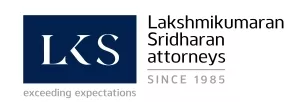The Madras High Court has set aside the Order of the Assistant Controller of Patents rejecting the patent for 'Associating Command Services with Multiple Active Components'. The Patent Office had rejected the patent alleging exclusion under Section 3(k) of the Patents Act, 1970 as constituting computer programme per se and not involving any inventive hardware. The finding of the Patent office that the invention lacked inventive step under Section 2(1)(ja) in view of certain prior arts, was also set aside by the High Court here. The applicant-appellant was represented by Lakshmikumaran & Sridharan Attorneys in this case.
The claimed invention processed commands to multiple unrelated applications by associating the command surface to more than one component registered to receive commands from the command surface. This enabled the outflow of commands to unrelated applications from a single command surface removing the necessity of multiple command surfaces. According to the Court, this technical contribution made the claimed invention efficacious over conventional systems which required the presence of multiple command surfaces on the web page for processing unrelated applications.
The High Court in its Judgement dated 3 July 2024 observed that the claimed commanding system was more than a set of instructions in code or any other language and was not limited in impact to a particular application or data set, i.e. it was application/data set agnostic. The Court noted that the programme possessed a 'technical effect' that enhanced the system's functionality by processing multiple unrelated applications using the same command surface.
The Court for this purpose also took note of the Joint Parliamentary Committee Report in respect of the Patents (Second Amendment) Bill, 1999, which recommended the inclusion of the expression 'per se', and was of the view that there is sufficient basis in text and legislative history to conclude that Parliament's intention was not to exclude all computer related inventions (CRI) from patent eligibility.
Also, relying upon precedents from the United Kingdom and the European Union, the Court noted that that the JPC Report equated the qualifier 'per se' with 'as such' and that the latter expression finds place both in the UK Patents Act and the European Patents Convention. It was thus held that even when the claimed invention relates to a computer related invention, if it results in a technical effect that improves the system's functioning and efficacy (effect on hardware) or provides a technical solution to a technical problem and is, therefore, not limited in its impact to a particular application or data set, it will surmount the exclusion under Section 3(k).
It may be noted that while setting aside the Assistant Controller's Order, the High Court in its decision in Microsoft Technology Licensing LLC v. Assistant Controller of Patents also concluded that the definition of computer programme as given in the Copyright Act is applicable in the context of the Patents Act, including for appreciating what 'computer programme per se' means. The Court was also of the view that a computer related invention used in a business method would not fall within the 'business method' exclusion under Section 3(k), as the monopoly claim is being sought for the CRI and not for the business method.
Lastly, the Court elaborately discussed few cited prior arts and distinguished them. It was hence of the view that the invention passes the inventive step test under Section 2(1)(ja) of the Patents Act, 1970. It was noted that the commanding system resulted in a shared command surface that accommodated the functioning of various unrelated applications, a technical advancement which would not be obvious to the person skilled in the art (PSITA).
The content of this article is intended to provide a general guide to the subject matter. Specialist advice should be sought about your specific circumstances.


